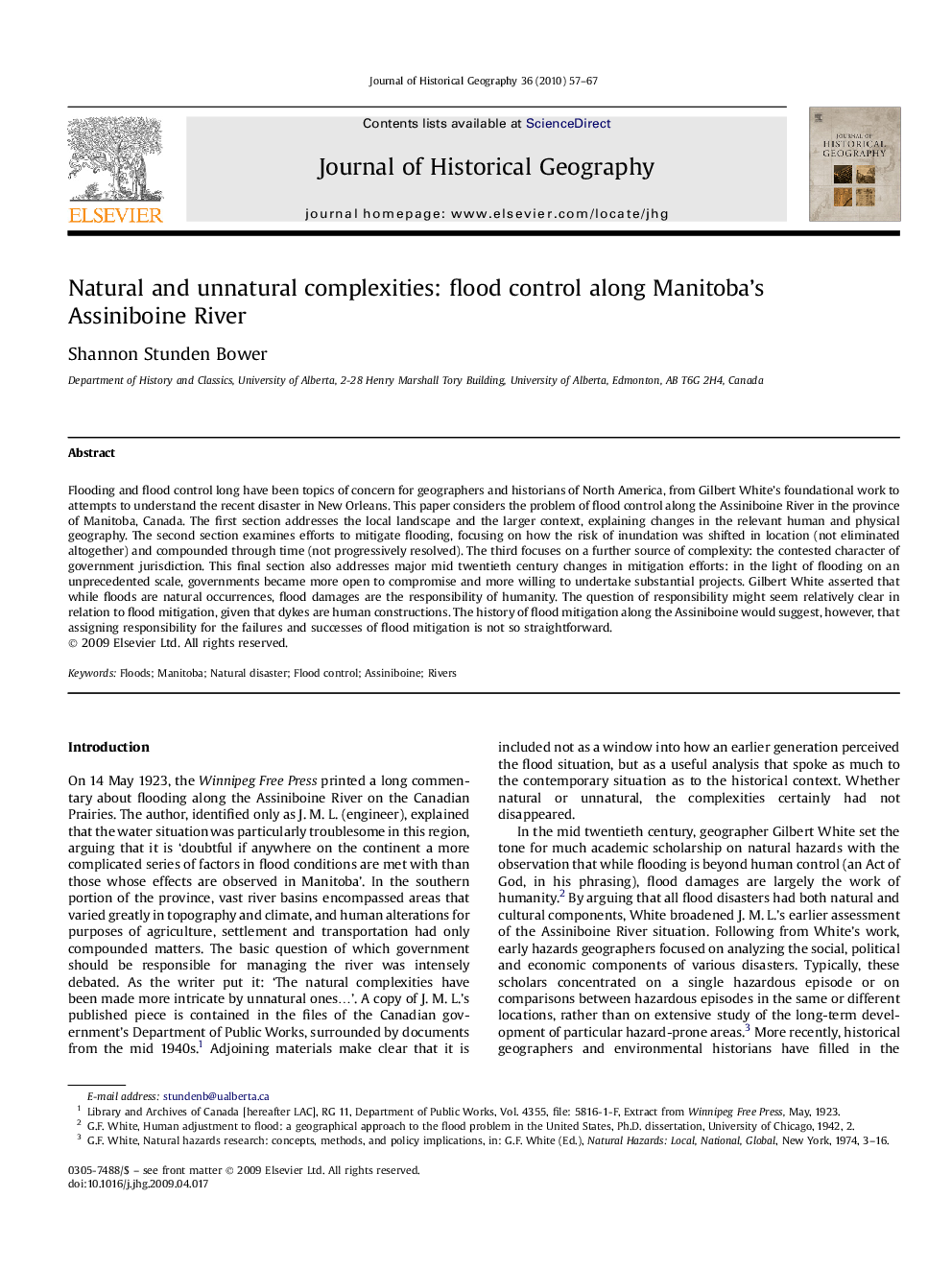| Article ID | Journal | Published Year | Pages | File Type |
|---|---|---|---|---|
| 1039327 | Journal of Historical Geography | 2010 | 11 Pages |
Flooding and flood control long have been topics of concern for geographers and historians of North America, from Gilbert White's foundational work to attempts to understand the recent disaster in New Orleans. This paper considers the problem of flood control along the Assiniboine River in the province of Manitoba, Canada. The first section addresses the local landscape and the larger context, explaining changes in the relevant human and physical geography. The second section examines efforts to mitigate flooding, focusing on how the risk of inundation was shifted in location (not eliminated altogether) and compounded through time (not progressively resolved). The third focuses on a further source of complexity: the contested character of government jurisdiction. This final section also addresses major mid twentieth century changes in mitigation efforts: in the light of flooding on an unprecedented scale, governments became more open to compromise and more willing to undertake substantial projects. Gilbert White asserted that while floods are natural occurrences, flood damages are the responsibility of humanity. The question of responsibility might seem relatively clear in relation to flood mitigation, given that dykes are human constructions. The history of flood mitigation along the Assiniboine would suggest, however, that assigning responsibility for the failures and successes of flood mitigation is not so straightforward.
